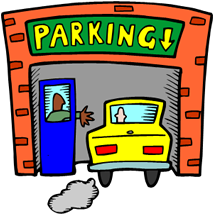Monthly Archives: February 2011

Learn How to Drive on your Spring Break
February 25, 2011
Mention the word “Spring Break” and images of vacations and getaways come to mind. The reality is: not everyone gets to go on spring break. While this may dishearten some teens, the good news is: it’s a great time to learn how to drive!
Don’t exactly know where to start? Here are some suggestions on getting started on some spring break learning:
- Consider a visit to the DMV office. Different states have different requirements, so knowing these is a good start. Also, dropping by the DMV will allow you to get materials such as driver’s manuals to help aide your study. This can also be done online, with most states having their own official DMV site.
- Practice for your DMV written test online with a drivers license practice test. When completing the online course you’re guaranteed to pass your written test.
- If you’re already have your learners permit, get practice. Most states require a minimum of 50 hours, so running errands at home can sometimes be a way for new drivers to get experience driving, or completing required hours for driving. It’s the perfect time to familiarize one’s self with the vehicle, and properly operating it.
- Learn basic vehicle troubleshooting. Learn how to check the oil. Learn how to change a tire. Basically, learn the basics of being prepared for anything.
- Have fun. Imagine the surprise your friends will get when they find out you got started on learning how to drive. Driving is a lifelong skill that is both a convenience and a privilege, and there’s no better time to begin learning than when you have a break from your other responsibilities.

Carbon Monoxide Poisoning from Vehicle Exhaust – A Vehicle’s Silent Killer
February 9, 2011
A group of young people decide to have a festive “get-together” at a friend’s house. They have been anxiously waiting for the “getty” the entire week. One of the friends is running a bit late to the reunion. His friends have texted him a few times in order to hurry him up so, he can get to the gathering as soon as possible. He finally arrives and parks the car in the garage. However, he mistakenly leaves the car running due to his hurried state. Some time later, a silent killer enters the room; not in the form of a human being and invisible to all. It is odorless, colorless, and lethal. It is called Carbon Monoxide. This toxic gas impairs oxygen delivery and disrupts “oxygen utilization and respiration on a cellular level, especially in high-oxygen demand organs” such as the brain and the heart. Therefore, breathing in high levels of carbon monoxide can cause loss of consciousness and death. Due to this fatal consequence of the carbon monoxide poisoning from the vehicle exhaust, all of the young people at the “get-together” tragically succumb to a heartbreaking death.
The aforementioned tragedy is based on real-life fatalities that occur way too often in our society due to the toxic dangers of carbon monoxide poisoning from vehicle exhaust. Even though not every carbon monoxide poisoning occurrence leads to death, it can still cause long-running symptoms as headaches, dizziness, weakness, nausea, vomiting, chest pain, and an altered mental status. Carbon monoxide can quickly build up to unsafe levels in enclosed or semi-enclosed areas, and that is a key factor why deaths can happen so sudden.
Approximately three-quarters of carbon monoxide emissions in the United States come from motor vehicles (around 56%). Each year, approximately 25 percent of all non-crash fatalities occur from unintentional carbon monoxide poisoning usually involving people inside passenger vehicles that were running inside enclosed spaces, but as previously noted the toxic gas can also spread externally to nearby enclosed or semi-enclosed spaces.
The following are some methods to prevent carbon monoxide poisoning from motor vehicles:
- Always make sure NOT to leave the vehicle engine running when parked in or nearby an enclosed or a semi-enclosed space.
- Never run a vehicle in the garage, even when the garage door is open.
- Have a mechanic check the exhaust system of your motor vehicle every year. A small leak in your car’s exhaust system can lead to a build up of carbon monoxide inside the car.
- Don’t allow people to travel inside truck canopies and campers. Vehicle exhaust can be drawn into the covered or enclosed area of canopies and campers.
- Install a carbon monoxide detector in a motor home or any recreational vehicle.
Carbon monoxide is a silent killer, but nevertheless it is quite imperative for us to not be silent and share with others education on the dangers of carbon monoxide poisoning from vehicle exhaust and on how to prevent it from happening.
Learn more vehicle safety tips at www.NationalSafetyCommission.com
